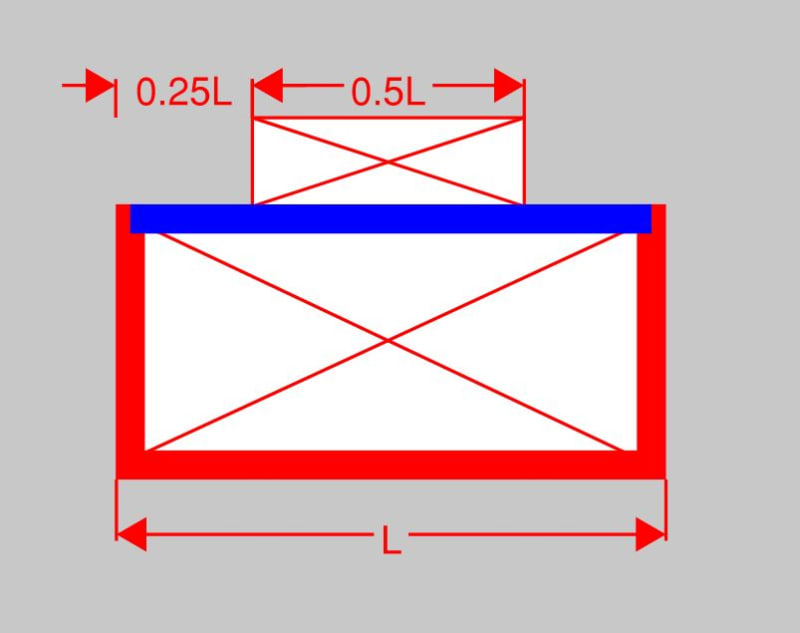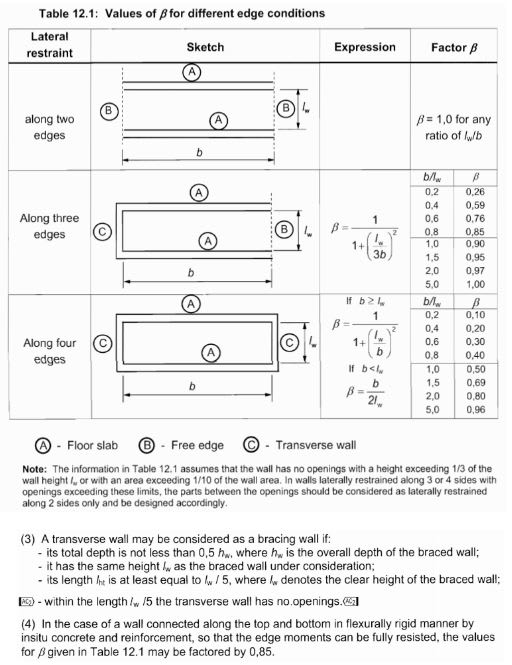Trenno
Structural
- Feb 5, 2014
- 831
With reference to sketch below, say you have a riser opening on each floor at the back of the lift shaft wall. Say we're also designing the core as 4 separate piers.
In terms of the blue wall effective length for buckling, I know the answer lies somewhere between:
a) Wall supported on each vertical edge only (ie the return walls).
b) Wall supported on all 4 sides, with a pinned connection between top/btm edge and slab.
c) Wall supported on all 4 sides, with a semi-rigid connection between top/btm edge and slab.
Are there any somewhat codified methods of refining the accurate wall buckling length?
The Eurocode (see below) will only allow you to take advantage of a semi-rigid connection between top/btm edge of wall and the slab. How about side edge connection with the return walls? It's likely given usual return wall lengths and slab spans, could one argue the side edge - wall return connection is more rigid than top/btm edge - slab connection?


In terms of the blue wall effective length for buckling, I know the answer lies somewhere between:
a) Wall supported on each vertical edge only (ie the return walls).
b) Wall supported on all 4 sides, with a pinned connection between top/btm edge and slab.
c) Wall supported on all 4 sides, with a semi-rigid connection between top/btm edge and slab.
Are there any somewhat codified methods of refining the accurate wall buckling length?
The Eurocode (see below) will only allow you to take advantage of a semi-rigid connection between top/btm edge of wall and the slab. How about side edge connection with the return walls? It's likely given usual return wall lengths and slab spans, could one argue the side edge - wall return connection is more rigid than top/btm edge - slab connection?


